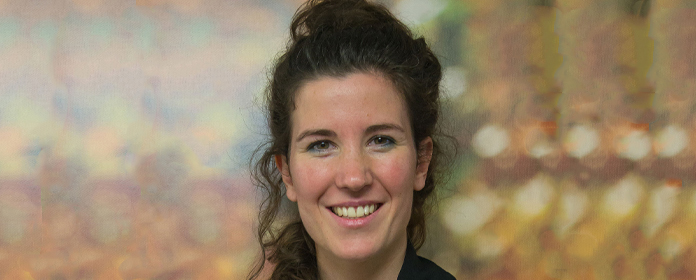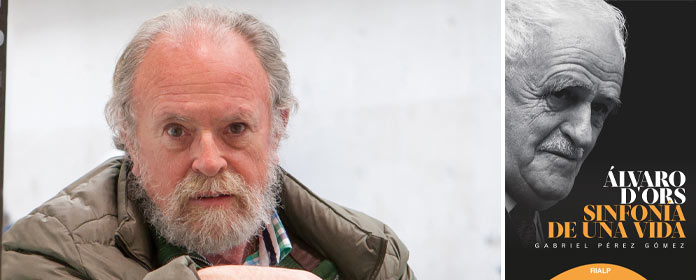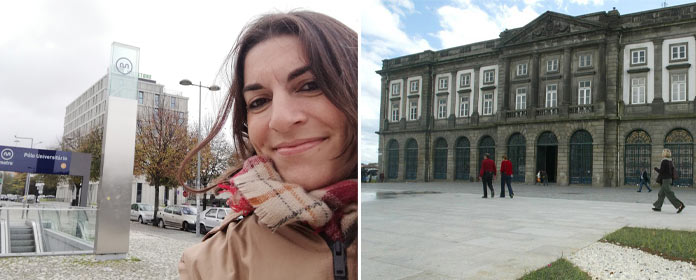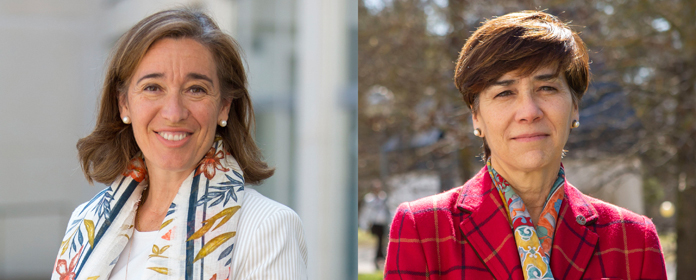New technologies at the service of museums to conserve and disseminate their cultural heritage
The project 'Creativity and Cultural Heritage' of the ICS organized a workshop with the participation of experts from the Museum of Navarra, Gnoss, Reina Sofia Museum and Botin Center.
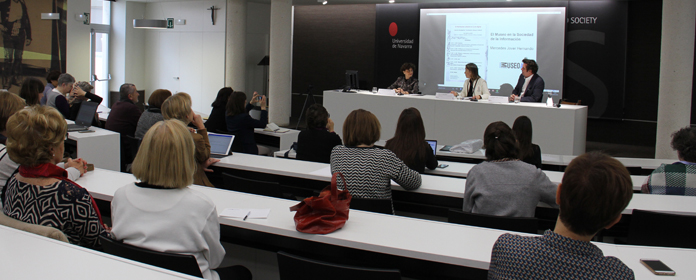
PHOTO: Natalia Rouzaut
Increasingly, museums are turning to new technologies to enhance the value of their rich heritage and bring it closer to the public. A workshop organized by the project 'Creativity and Cultural Heritage' of the Institute for Culture and Society (ICS) of the University of Navarra brought together four experts from Gnoss, Museo de Navarra, Museo Reina Sofía and Centro Botín, to discuss this issue and learn about the experience of their institutions.
"The aim is to conserve and study cultural heritage with the goal to integrate the demands of today's society and the real value of such heritage and generate interaction between the two, beyond turning it into a mere object of consumption at the service of tourism," said Julia Pavón, principal investigator of project.
The first discussion paper ran to position of Mercedes Jover, director of the Museum of Navarra, who reflected on 'The Museum in the information society'. She reviewed the origin of museums from the phenomenon of collecting and its evolution from the Age average, the Renaissance and the Enlightenment to the present era.
He told that the Museum has proceeded in 2019 to a review of the facilities and the permanent exhibition under the motto 'All art is contemporary', with which the institution seeks to make the leap to the XXI century. The pieces have ceased to be exhibited in a single timeline to focus on how works and artists interpret different key themes for humanity.
He also indicated that the Museum is working to make its collections available to the public through the Internet.
The next speaker was Ricardo Alonso, CEO of Gnoss, a technological business that builds and exploits graphs from knowledge applying semantic technologies. In his talk, 'Museums and metamuseums: art in the era of digital reproducibility', he discussed the project 'The Prado Museum on the web', a new digital museography model with which they have made accessible all the content of the institution.
Gnoss has represented the heritage of the Prado Museum through a graph on knowledge that links the works of art and the authors of its collection with other assets of the institution such as the encyclopedia or the file. The goal, he said, is that the public can access this information in a personalized way.
agreement According to Alonso, project responds to the idea that museums, like any other institution, "are conversations", which in the Internet era develop in a more symmetrical way than in the past. He argued that this makes it necessary to differentiate audiences and talk to each of them according to their particular interests.
Rethinking GuernicaNext it was the turn of Olga Sevillano Pintado, manager of virtual programs at the Museo Nacional Centro de Arte Reina Sofía, who spoke on 'Processes and functions in the digital era'. She spoke about 'Rethinking Guernica', a website that compiles and presents materials related to the famous painting, which is currently part of the museum's collection, open to the public. He acknowledged that the research on which it has been based has taken more than two years and has required an interdisciplinary work (researchers, computer scientists, art historians, designers...).
He pointed out that the website is made up of nearly 2,000 documents from 120 public and private archives, institutions and national and international agencies, which can be accessed through a powerful search engine. In addition, he stressed that the page is in evolution, as it is being enriched with new documents such as exhibition catalogs, correspondence, internal museum documentation, newspapers, magazines....
A prominent place on the website is occupied by the study of Guernica in gigapixel, which groups and manages a large issue of images taken of the painting, both of the pictorial surface and of the back and the frame.
Arts, emotions and creativityLastly, Fátima Sánchez Santiago, executive director of the Botín Center, inaugurated in 2017 with the support of the Botín Foundation, spoke. In her lecture, 'Centro Botín: Arts, emotions and creativity', she talked about how emotions can be important elements for creativity to the extent that some tools such as art contribute to generate and manage them properly.
Precisely, the center is developing a project together with Yale University to investigate and study in detail the role of emotions in the creative process, generating a theoretical model to answer how and why they have an impact on human creativity. The final step, he explained, is the application of this knowledge generated to various programs, activities and workshops.
As an example, he mentioned the activity promoted under degree scroll 'Creative thinking strategies for life: a workshop for professional adults using art' and some of its results: participants significantly improved in the generation of more original ideas in divergent thinking tasks, generation of more original ideas in problem analysis and higher frequency of creative behaviors after taking the course.

